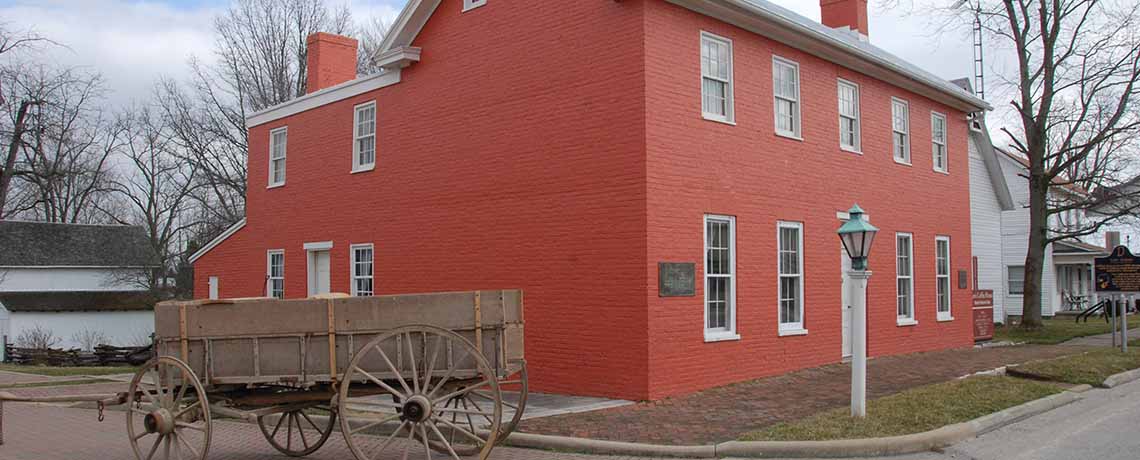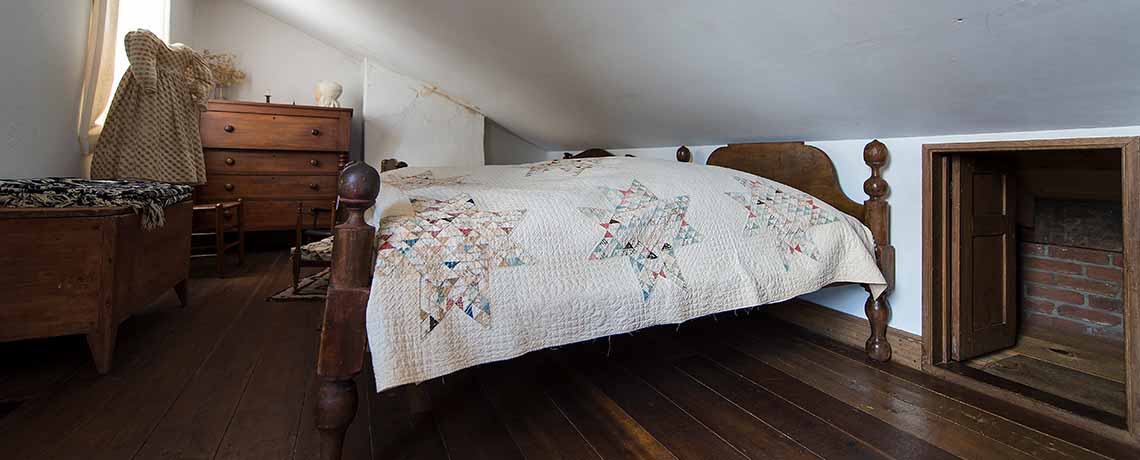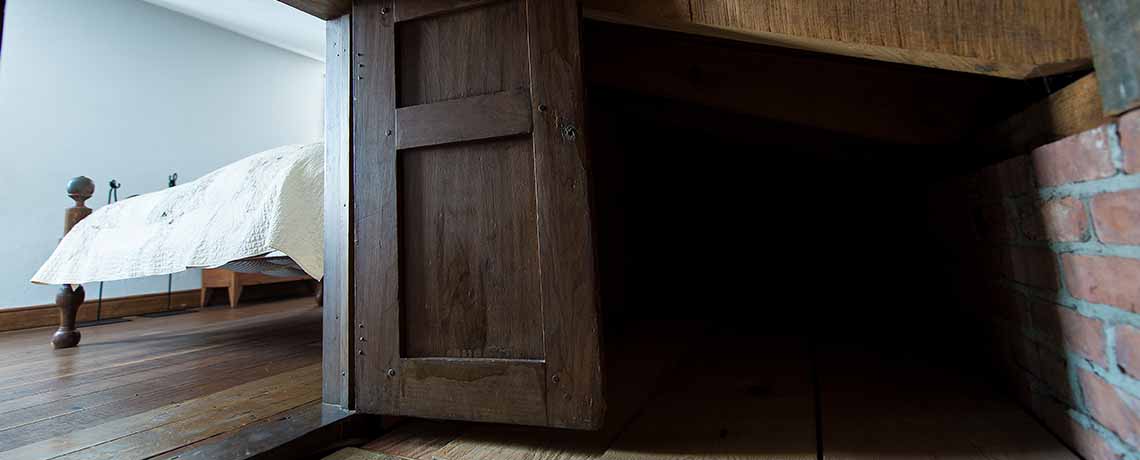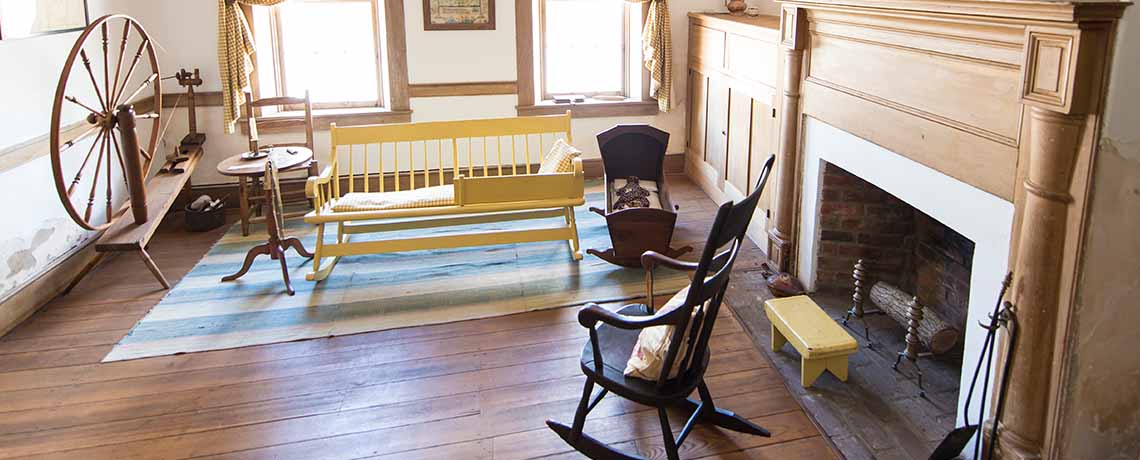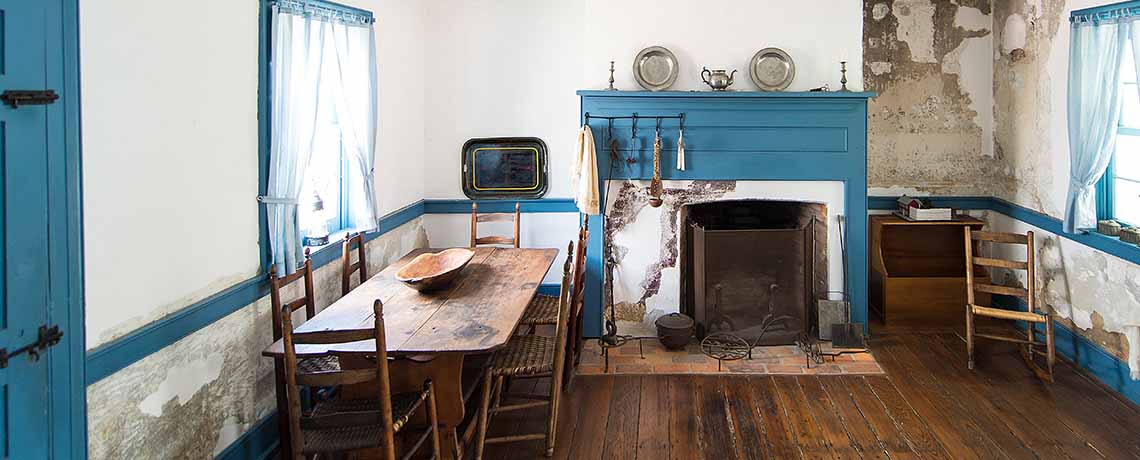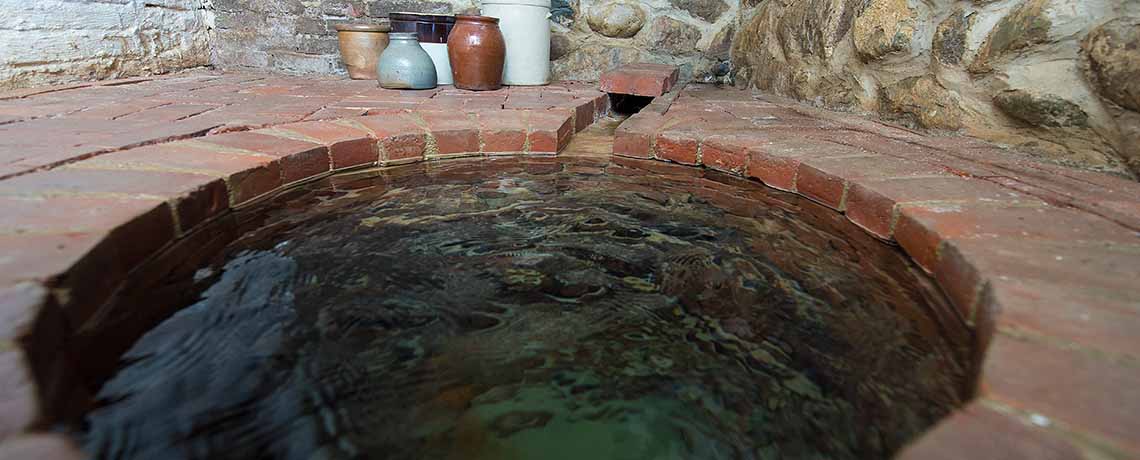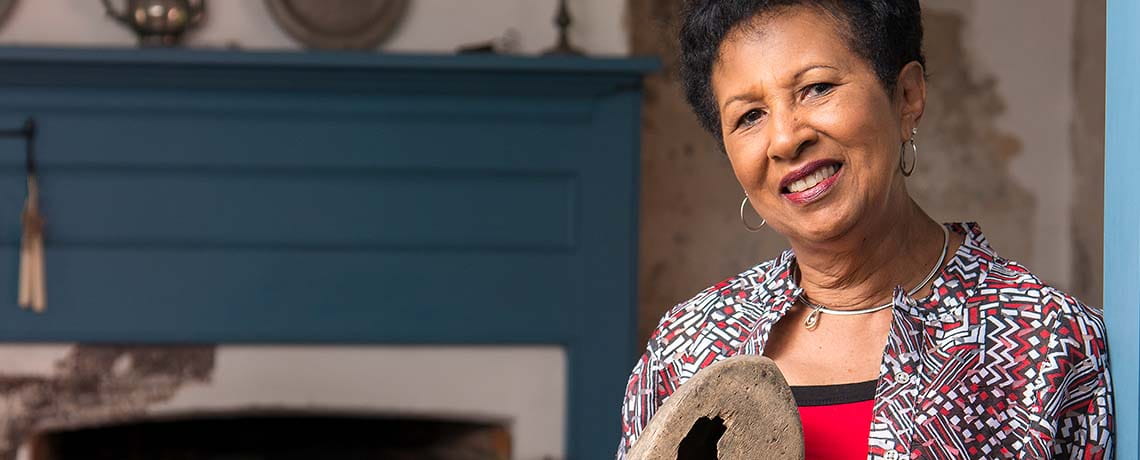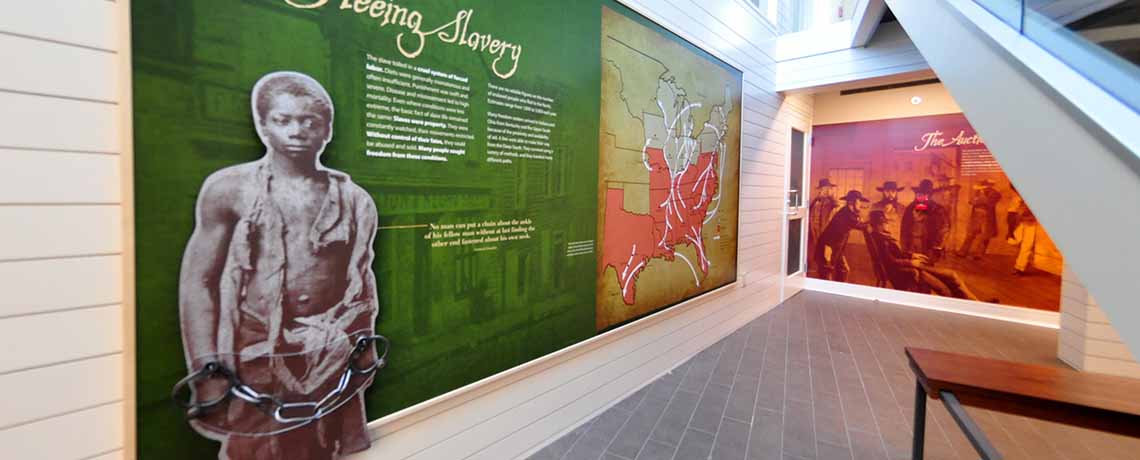After giving a tour of the Levi and Catharine Coffin State Historic Site to some schoolchildren a few years ago, longtime volunteer docent Eileen Baker-Wall was astonished when a little girl asked for her autograph. “I always try to convey that I’m in awe of what happened here and how it affected my family,” says Baker-Wall. “I think that’s what impressed the girl.”
For some two decades in the 19th century, the eight-room east central Indiana brick house of Quakers and antislavery activists Levi and Catharine Coffin was a safe harbor to enslaved people making their way north. In fact, so many enslaved people passed through the home that it became known as “The Grand Central Station of the Underground Railroad.”
The Underground Railroad operated from the early to mid-19th century. It was a clandestine multistate network of Black and white individuals—called conductors—who jeopardized their own liberty to help runaways—or passengers—making perilous journeys to freedom by transporting them to havens known as stations.
Now a National Historic Landmark, the Coffins’ beautifully preserved 1839 Federal-style house sits along US 27 in Fountain City (previously Newport), a small rural community about 10 miles from Richmond, Indiana. An adjacent Interpretive Center examines the Underground Railroad in the context of national events such as the 1787 Northwest Ordinance, which led to the
prohibition of slavery in Northern states such as Indiana and Ohio, and fugitive slave laws that strengthened Southern slave owners’ rights to pursue runaways. After the passage of those laws, anyone assisting escapees risked fines or imprisonment.
Levi and Catharine offered sanctuary to more than 1,000 men, women and children while they lived in Fountain City, says Joanna Hahn, manager of the historic site. “We use that number because Levi stated that a week seldom passed when they didn’t receive a passenger,” she says. Since Levi began helping runaways earlier in his native North Carolina and was involved in the abolitionist movement in Cincinnati during his later years, he might well have succored 3,000 freedom seekers during his lifetime.
A PERSONAL CONNECTION
Among those aided by the Coffins was Baker-Wall’s great-great-grandfather William Bush. Baker-Wall grew up in Fountain City and learned about Levi and Catharine Coffin in school, but she knew nothing about her own roots until her high-school history teacher asked the class, “Who are you?”
Baker-Wall’s great-aunt had the answer. “After hearing her oral history of our family,” Baker-Wall says, “I realized my heritage was one to be proud of.”
Family legend has it that Bush escaped slavery in North Carolina by having himself shipped to Indiana in a wooden box addressed to Levi Coffin. Based on her own research, Baker-Wall thinks he likely came via the Underground Railroad because three of its main routes converged in Fountain City. “Freedom seekers were secretive,” she explains. “They never said exactly where they came from or were going next.”
Baker-Wall knows that her great-great-grandfather worked as a blacksmith and lay veterinarian, owned a home in Fountain City, and is listed in the 1850 census, but she suspects that “William Bush” was an alias.
“Levi could have changed his name to protect him from slave catchers,” she suggests. Indeed, a memoir Levi published in 1876—The Reminiscences of Levi Coffin—discusses giving fugitives new names to conceal their identities.
For example, when the Coffins sheltered a woman who had evaded capture by braving the icy Ohio River, Catharine renamed her Eliza Harris. Harriet Beecher Stowe later immortalized Eliza’s story in her influential novel Uncle Tom’s Cabin.
Canada was often the fugitives’ objective, particularly after the passage of the 1850 Fugitive Slave Act, which essentially put any former slave—or even free Blacks—at risk of being captured anywhere in the US and forced into slavery. Baker-Wall speculates that Bush decided to remain in Fountain City instead of going to Canada because of a local African Methodist Episcopal church and nearby Black settlements. “He must have felt comfortable staying here because he became a conductor himself,” she says.
Bush is buried in Fountain City’s Willow Grove Cemetery. His headstone reads: “WILLIAM BUSH, ‘SLAVE’ ASSISTED LEVI COFFIN WITH THE SLAVES FLIGHT FROM BONDAGE TO FREEDOM.”
POIGNANT REMINDERS
When Levi and Catharine arrived in Fountain City in 1826, they were part of a Quaker migration that made the community an abolitionist hotbed and drove antislavery sentiment in the fledgling Hoosier State. Levi opened a mercantile business, and the young couple, who it is believed initially lived either over or behind his general store, soon began hiding runaways. Levi recalled in his Reminiscences, “It was never too cold or stormy, or the hour of night too late for my wife to rise from sleep, and provide food and comfortable lodging for the fugitives.”
Levi expanded his business interests and became successful enough to serve as a director at the Bank of Indiana in Richmond. As they prospered, Levi and Catharine remained committed to using their resources to support freedom seekers, as is evident at Coffin House. “Levi was an extreme planner and always thinking ahead,” says Hahn. “The house was built to enhance what they were doing.”
Visitors, for example, can peer into an attic hiding place that could hold 14 people and can go into the cellar to see an unusual indoor well. The well’s clever location thwarted slave catchers and informants by disguising the Coffin household’s unusually high water consumption. “The most slaves the Coffins had at one time was 17,” says Hahn. “That well helped solve the problem of how to hide 17 people staying in a house where they weren’t supposed to be.”
The historic site’s treasures include pewter pieces that belonged to the Coffins; a 19th-century rag doll reminiscent of a doll that an African American child might have had; and a mortar and pestle as well as a pair of wooden shoes found in Bush’s attic. Bush prepared veterinary potions with the mortar and pestle, and he wore the wooden shoes to protect his feet when he worked at blacksmithing. Bush reportedly hand-carved the shoes, one of which has a large hole from wear.
“If I took those shoes out of their case and put them in my hands, I would cry,” Baker-Wall admits. Of course, the greatest artifact at the site is the Coffin House itself. Since the Underground Railroad operated surreptitiously, most station locations and participants’ names are unknown. Coffin House is extraordinary because it’s a rare physical reminder of those who dared to escape and those who dared to right a wrong and because of the remarkable accounts of suffering, sorrow, courage and cunning documented in Levi’s Reminiscences.
“People approach [the home] as sacred ground,” says Hahn, “because they can actually stand on the same floors where Levi, Catharine and freedom seekers stood and hear the firsthand stories that Levi related in his book.”
Recognition was neither sought nor received by the Coffins or William Bush during their lifetimes. Yet as the Coffins’ unpretentious house and Bush’s simple shoes now attest, the profound choices they made helped move a nation.








